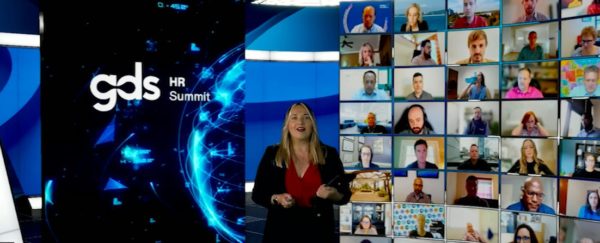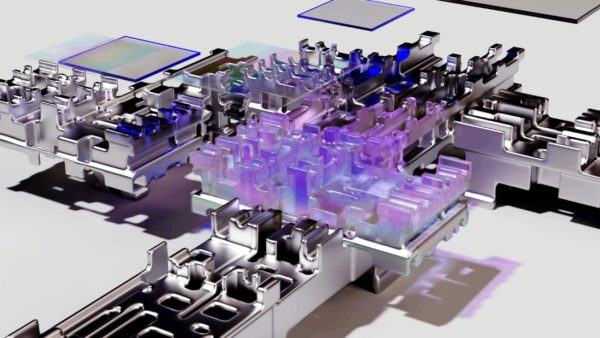Due to the inherent volatility present in global supply chain operation, too often, we are forced down a path of transition one of transformation. For supply chain operators, this represents a considerable challenge, particularly given recent stressors like Covid-19 and the grounded Ever Given. Given that the future success of our supply chains depends on successful transformation then, how might we change our thinking?
According to Purvee Kondall – Senior Director, Technology & Engineering Sourcing at Albertsons –moving from a transition focused mindset is critical. As she put it, “we need to figure out a way to evolve together so we have less disruptions but with greater sustainability. As well as that, we need to be digitally enabled.” Transformation over transition will be key here.
Having exited the period of profound uncertainty following the pandemic, it’s time to allow our approach to shift. With this in mind, what’s the difference between transition and transformation and why is change so vital to today’s supply chains?
Transition Vs. Transformation
Transition is defined as ‘the process or a period of changing from one state or condition to another’. Transformation, however, is seen as ‘a marked change in form, nature, or appearance’. What separates the two is the scale of change at play, but how does this apply to supply chains?
During 2020, Gartner found that 50% of organizations had not yet actively started to build a roadmap for their supply chain digital transformation. What this suggests is that half of the organizations surveyed by Gartner were still situated in a transition phase, unable to commit to transformation. Given that organizations with effective supply chain digital transformation roadmaps are around 3 times more likely to succeed it’s critical that we move to transform.
Avoiding a Transition Mindset
If – as previously suggested – our mindset must shift in this space, we need to know what we are aiming for. With this in mind, Purvee outlined the following as areas in which our thinking can tangibly change.
- Risk: This may seem counterintuitive given how risk-averse we’ve become throughout the pandemic, but risk is often necessary. As Purvee suggested, “most organizations and people, are not really willing to take the risk when we’re in the transition state. When we’re in a transformation state, we are and we’re more willing to be intentional about our vision.”
- Leadership: Supply chain leaders need to alter their approach, shifting focus from today towards tomorrow. As Purvee put it, “in the transformation state leaders are really going to think ahead, they’re going to be agile, they’re going to have the velocity to adapt.”
- Mobility: Our ability to adapt quickly to the change around us will be what separates the leaders from the laggards. As Purvee suggests, “one of the things that we get stuck in in the transition state is this idea that we are a titanic, we can’t turn too fast. When you’re in a transformation state you are going to think why not, instead of why.”
Futureproofing the Supply Chain
To help shore up transformation in our supply chains, we must should also consider the means of better futureproofing them. As Purvee established, “when you think about transformation, think about it as how do I move from the status quo to how do I think outside the box.” In this way, futureproofing the supply chain is again an act of shifting our mindset. What changes can me make in the day-to-day then?
- Technology: This is obvious, but we won’t be able to realize effective supply chains in industry 4.0 without the technology to support it. IoT, Blockchain and robotics all promise huge changes in supply. For Purvee though, “AI and Machine Learning are going to be huge for all of us in the future, regardless of the industry we’re in.”
- Data: The supply chain of the future will be driven by data from the ground up. Data will be used to direct us, to reinforce strategy, and to keep us at the forefront of transformation. As Purvee noted, “data, whether it’s in data lakes or warehouses – everything that you house, all of that should be seen as your next revenue engine.”
- Talent: We’re only as flexible as our employees and as such, “we must train our population and our workforce to be more technologically driven, more digital-enabled so that as we’re deploying ideas it allows us to come ahead and it allows us to think together.”
- Diversity: We need to encourage diversity in all forms across our supply network. As Purvee stated, “be very open to a diversity of thoughts, it does not matter what people’s titles are, they might have the next great ideas. Be willing to foster that, be willing to be open and listen and understand.”
- Collaboration: Finally, we need to encourage greater cross-company and cross-industry collaboration when it comes to supply chain. The scale of the challenge that many of us face in supply is substantial but by collaborating with one another to find solutions, we will be better placed to address them. As Purvee concluded, “I’ve always found that your network should not just be limited to within your team within your own company. If we feel like we have a shared goal and a shared outcome, we’re going to be successful together.”
GDS Summits are tailored 3-day virtual event conferences that bring together business leaders and solution providers to accelerate sales cycles, industry conversations and outcomes. Regarding the Supply Chain Insight Summits 82% of Delegates said the overall experience of Digital Summit they attended was either Above Average or Excellent and 75% of Solution Providers said they would be interested in sponsoring future events.
For more, click here to hear from attendees on how GDS has helped them to achieve their business outcomes.
Continue the debate at GDS’ Supply Chain Insight Summits where we bring together senior supply chain executives who are actively seeking to share, learn, engage, and find the best solutions.











